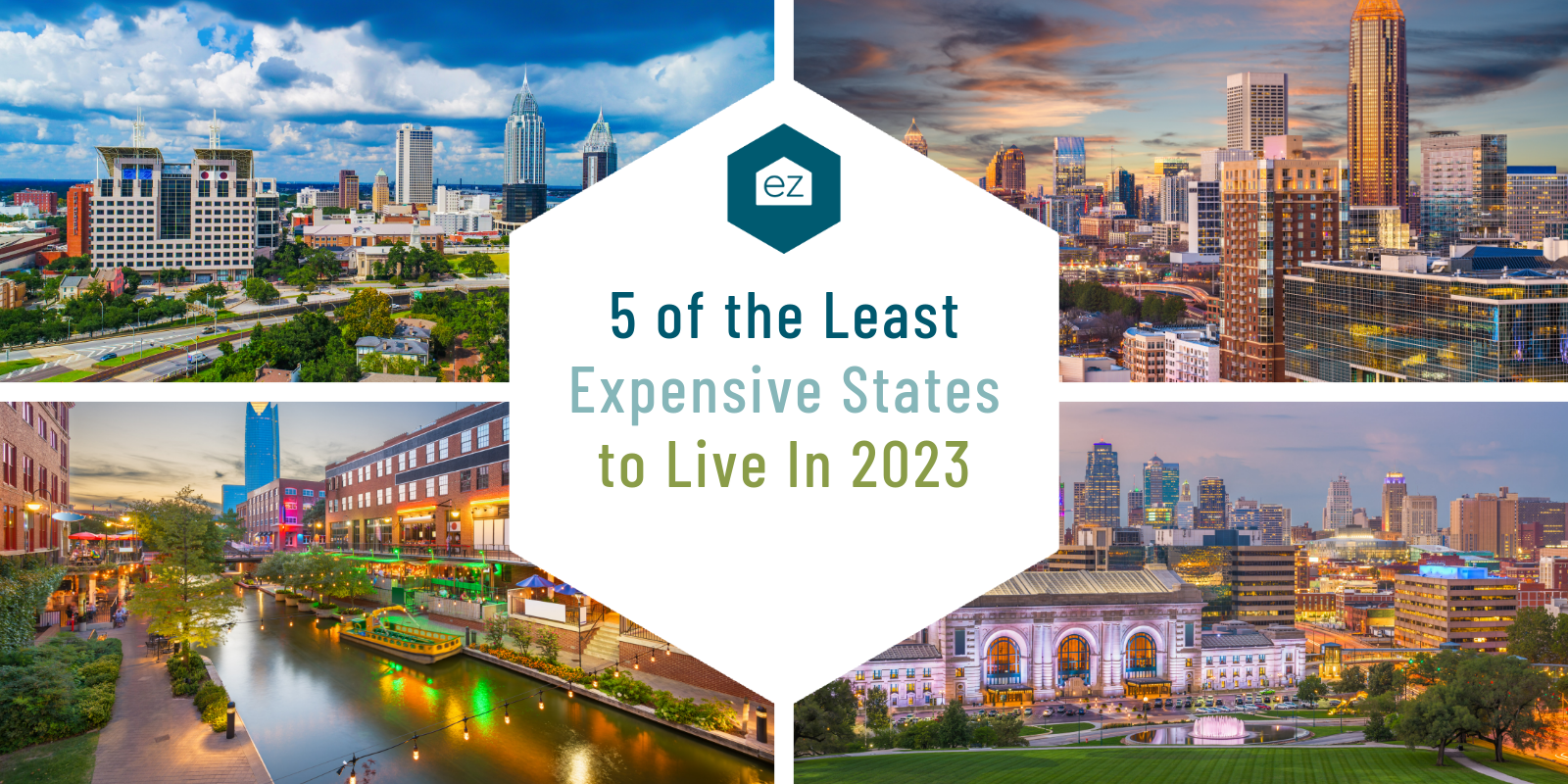5 of the Least Expensive States to Live In 2023

5 of the Least Expensive States to Live In 2023
Want to increase your savings and have more money left over at the end of the month? While hard work and sound financial planning count for a lot, they don’t always stack up to the importance of cost of living (COL). Earning a living income in a low COL area allows you to have more money for saving, spending, and investing. Even better: the amount of house you can buy for your mortgage dollar increases with a lower COL.
This is especially true when prices are going up across the board. Recent CPI data in January showed that the “all items index” increased 6.5% before seasonal adjustments over the previous 12 months. In other words, the cost of living everywhere is rising across the United States. This makes it even more important for home buyers to consider how overall spending impacts how much mortgage they can afford.
Understanding the COL Index

Before we evaluate which states are the least expensive to live in, let’s first consider what that means. According to 2023 data, most Americans currently believe they have room to improve when it comes to their finances. That number rose throughout 2022.
Inflation did some damage both to consumers’ pocketbooks and their psyches last year. By the end of the year, 71% of Americans said they felt concerned about a recession, which increased 7% throughout the year.
Finding financial wiggle room can be made easier by moving to a place with low COL. But what is the cost of living index composed of? According to Investopedia, the COL index considers the average cost of food, shelter, transportation, energy, clothing, healthcare, energy, and childcare. Then, when you compare the cost of these items between equivalent levels (towns vs. towns, states vs. states), you can rank an area for its relative COL index score.
Sounds straightforward enough. The trouble is that each COL index results differ depending on who you ask. For example, the Family Budget Calculator takes into account the cost of living relative to local family incomes. That’s why San Francisco ($148,429 budget for a four-person family) might sound expensive compared to the national median income. However, the median family income in San Francisco is also higher than the median income across the country. The price of living in San Francisco is still high, but relative to income, it’s not as expensive, so the Family Budget Calculator accounts for this in its score.
What Are The Least Expensive States?

We’ve previously used the World Population Review numbers to find the most expensive states for 2023 in the U.S. Now, look at the least expensive states in the U.S. in 2023. You’ll find a common thread in what makes them so affordable.
The most affordable places to live were:
- Mississippi. The lowest COL index on the list came in for Mississippi at 83.3. What is the primary driver behind this low number? Housing, with a dirt-cheap 66.3 rating, is far lower than any other category on the list for Mississippi. The other scores for the state (groceries at 92.2 and healthcare at 94.7) often also fell under national averages. However, they were much closer to what you’d expect to pay for those expenses.
- Kansas. Kansas isn’t far off Mississippi, scoring at 86.5 overall on the cost of living index. Like Mississippi, Kansas’s overall scores decreased thanks to the housing, with a COL index of 72.6. Its highest scores came from utilities (100.2) and healthcare (100.4). Those scores ended up slightly ahead of the national average. That’s a great reminder of how much the overall scores can fail to reflect the individual prices that come with living in a specific state.
- Alabama. You don’t have to go far from Mississippi to find another of the lowest COL states in the U.S. Its 87.9 rating overall was just a tick above Kansas. However, it also scored lower than Kansas when it came to housing, coming in at 70.1. Utilities were even higher, however, at 100.7. Alabama also had a higher “miscellaneous” category, with 94.3—higher than Kansas and Mississippi. This includes expenses like child care or the internet.
- Oklahoma. Technically, Oklahoma’s overall score tied Alabama’s for the third-lowest in the nation. Its housing prices were higher than Alabama’s (at 74.7 vs. 70.1), but it balanced that out with lower costs for utilities. Overall, Oklahoma had a “flatter” spending profile across the different categories, which is good for home buyers looking for places with a cost of living that’s a bit more predictable.
- Georgia. It mainly scores higher overall for harder-to-determine reasons—a higher “misc” score—but otherwise compares favorably with other states on the list, as well as scoring lower than the state to the north, Tennessee. With utilities and transportation scores lower than Oklahoma, Georgia is only a little bit higher on the list.
There are some general patterns here. For one, most of these states’ low cost of living was primarily driven by lower property values. On the opposite end of the spectrum, states like Hawaii and New York saw higher overall living costs driven by their higher property values. In other words, the cost of living greatly reflects how much it costs to buy or rent a home in that state or area.
It’s the same with your pocketbook. For many Americans, housing costs can be the primary and largest annual expense. That’s why it’s so integral to understand where the low cost of living states are, especially if you’re thinking about moving.
Start Your Home Search
Preston Guyton
Share this Post
Related Articles
City Guide
Your EZ Guide to Moving to Arkansas
City Guide
A Guide to Connecticut Property Taxes
City Guide
What to Know About Living in Atlantic City
City Guide





